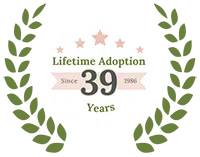Adoption Statistics in the U.S. – A Data-Driven Look at How Families Are Formed

Adoption is a powerful and life-changing way to build a family, but how many adoptions happen each year in the United States? Who is being adopted, and how are these numbers changing?
Understanding adoption statistics helps hopeful adoptive parents, professionals, and policymakers better grasp the scope of modern adoption. The numbers reveal how society is responding to the needs of children, the values we place on family, and the choices available to birth parents today.
This article shares the most recent U.S. adoption statistics, including foster care, private domestic infant adoption, and international (intercountry) adoption.
Why Adoption Statistics Matter
Adoption trends reflect more than just annual counts. They help shape social services, public policy, and the support available to families and children. When fewer children enter foster care, it can indicate more effective family preservation efforts. A decline in international adoption may point to changing global policy. And the number of domestic infant adoptions reflects both cultural perceptions and the availability of options for expectant mothers.
For families researching how to adopt, understanding current adoption statistics provides helpful context about the paths available, what to expect, and how adoption is changing nationwide.
Total Adoption Statistics in the United States
In 2022, an estimated 80,598 children were adopted in the U.S., not including stepparent adoptions. When stepparent adoptions are included, the total rises to 106,196. U.S. adoption data tracks three primary pathways: foster care adoption, private domestic adoption (typically infant placements), and intercountry (international) adoption.
Types of Adoption in the U.S.
Each adoption pathway has a unique process, timeline, and population of children served:
- Foster care adoption involves children whose parents’ rights have been terminated by the court. These children are typically older (or have special needs) and are adopted through the public child welfare system.
- Private domestic adoption generally refers to infant adoption through a licensed agency or attorney. It usually involves open communication between birth and adoptive families as the child grows up.
- Intercountry adoption involves adopting a child from another country and navigating both U.S. and foreign laws including the Hague Convention agreement.
Foster Care Adoption Trends
Foster care adoption continues to be the most common type of adoption in the U.S., making up about 66 percent of all non-stepparent adoptions in 2022. That year, 53,579 children were adopted from foster care.
However, this number has declined steadily since 2019. Fewer children are entering foster care, and many agencies are placing greater emphasis on family reunification. While this can be good news for family preservation, it also means fewer children are becoming legally available for adoption.
More than 113,000 children in foster care are currently waiting for adoption. The average age of children adopted from foster care is about 6.5 years old. Many waiting children are part of a sibling group, others may have emotional or medical special needs requiring additional care.
Private Domestic Adoption Statistics
Private domestic adoption accounts for about 32 percent of non-stepparent adoptions in the U.S. These typically involve the voluntary placement of infants or children under the age of six-years-old with adoptive families, often with the help of a licensed adoption agency.
– 2022: 25,503 private domestic adoptions (non-stepparent)
– 2021: 25,949
– 2020: 20,869
– 2019: 24,720
The number of private infant adoptions has remained relatively stable over the last several years, even as other types of adoption have declined.
When stepparent adoptions are included, the total number of private domestic adoptions in 2022 jumps to 51,101. Approximately half of all private adoptions in the U.S. each year are stepparent adoptions, with the rest being voluntary placements and kinship adoptions.
Intercountry Adoption Statistics Show Continued Decline
International adoption has seen the most dramatic decline of any adoption type. In 2023, just 1,274 children were adopted from other countries into the U.S., down from over 20,000 annually in the early 2000s.
Top countries of origin for international adoptions in 2023:
1. Colombia – 221
2. South Korea – 141
3. India – 126
4. Bulgaria – 106
5. China – 75
Geopolitical factors (such as war and instability), regulatory changes, and the pandemic have all contributed to the decline. Countries such as China and Ukraine have suspended most international adoption activity. Other nations have prioritized domestic placements (and foster care) or tightened restrictions. And still others are simply not options due to ongoing wars, unstable governments, or general safety concerns.
Many of the once popular countries for intercountry adoptions to the U.S., like Guatemala (4,728 adoptions in 2007) and Russia (12,753 adoptions in 2009), are no longer options for U.S. parents. Similarly, other countries have made drastic changes reducing adoptions such as China (7,906 adoptions in 2005) and South Korea (11,200 adoptions in 1995).
What Today’s Adoption Statistics Mean for You
While overall adoption numbers have declined over the past several years, private domestic infant adoption has remained relatively consistent. For hopeful adoptive parents, this remains a viable and meaningful path.
At Lifetime Adoption, we specialize in private domestic infant adoption. As a licensed adoption agency that works nationwide, we walk with families and expectant mothers through each step of the process. We believe every adoption begins with compassion, clarity, and care.
Whether you’re just starting to learn about adoption or ready to take the next step, having up-to-date adoption statistics can help you make informed decisions for your future.
Learn More About Adoption
If you’re exploring adoption and want to know more about what to expect, download our free guide, Adoption Roadmap: What Every Couple Needs to Know Before Starting the Journey. You can also reach out for a free consultation with a coordinator to talk about your next step. Call or text us at 727-493-0933.
Sources:

Lifetime Adoption, Inc. is a Licensed Child Placing Agency in Arkansas. (License AR #00050809)
Copyright © | Lifetime Adoption





